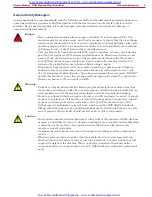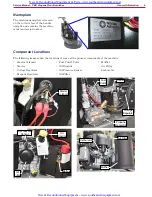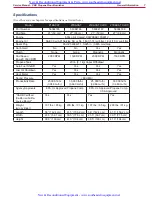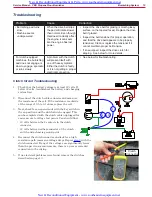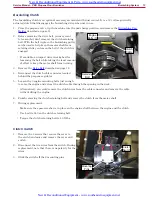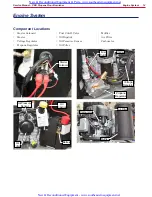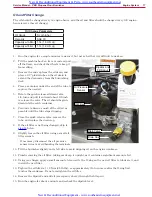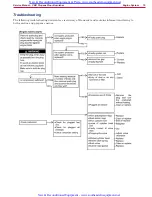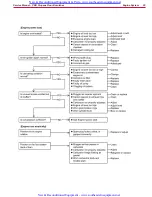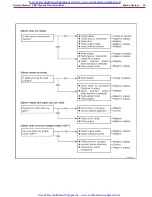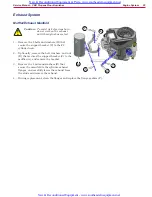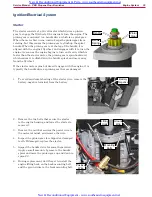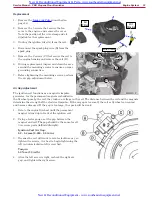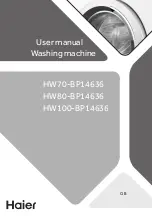
Engine System
18
Service Manual – PBU Propane Floor Burnisher
Spark Plug Change
Spark plugs provide a view into the health of the engine When changing spark plugs it is a good idea to
make note of the condition of the plugs to see if the engine is operating properly Normal spark plugs will
generally have a light tan or gray color around the electrode If the spark plugs have a different appearance,
additional engine troubleshooting should be completed There are many different signs of an unhealthy
engine, but the two most common signs are blackened spark plugs If the tips are blackened with a dry
soot, it is a sign the engine is running rich If the spark plugs are blacked and wet-looking, it is a sign of oil
consumption
#1 Cylinder
#2 Cylinder
Plug Wire
Boot
Plug Wire
Boot
Plug Type:
Quantity-2, NGK BPR4ES
Plug Gap:
0 6 mm (0 025 in)
Socket Size:
13/16-inch
1 Pull the plug wire boot off the spark plug Take care not to pull the boot from
the wire
2 Using a 13/16” spark plug socket, remove the spark plug from the cylinder
3 Inspect the gap on the new plugs The manufacturer’s default gap is 0 032”
(0.8 mm), which is beyond specifications for the Kawasaki engine, and must be
re-gapped
4 Install the new spark plug Make sure to thread the spark plug by hand to
avoid cross threading
5 Tighten the spark plugs to 22 N
•
m (16 ft
•
lb)
6 Reconnect the plug wire boots You should feel a slight click as the boot snaps
over the tip of the spark plug Give the boot a slight tug to make sure it is
properly connected
Plug Gap
New & Reconditioned Equipment & Parts- www.southeasternequipment.net
New & Reconditioned Equipment - www.southeasternequipment.net


